Dear Zazie, Here is today’s Lovers’ Almanac from Mac Tag to his muse. Be sure and read the Modigliani-Hébuterne love story below. It is literally, to die for. Follow us on twitter @cowboycoleridge. Best, Rhett
The Lover’s Almanac
Dear Muse,
© copyright 2020 mac tag/cowboy coleridge all rights reserved
after, long months later,
the beauty and sorrow
of havin’ (do i still)
after you in me
and me in you
hold your arms between
mine and my body
on your body
you are even
more than before
i see how much
without knowin’
i am there
here i am,
and you
© copyright 2019 mac tag/cowboy coleridge all rights reserved
what brilliance
between two as one
this full woman
and this lucky man
on a journey
not taken lightly
a journey charged
with findin’
and followin’
and exceedin’
their dreams
© copyright 2018 mac tag/cowboy coleridge all rights reserved
The followin’ poem was inspired by Pablo Neruda’s “Full Woman, Fleshy Apple, Hot Moon”:
Full Woman
Full woman, supple flesh, hot moon
Thick smell of pine trees down by the river
What obscure brilliance opens between two lovers
What ancient need does a woman touch with her senses
Lovin’ this full woman is a journey not taken lightly
A journey frought with charged passion and sudden storms
With clashes of dreams and desires and lightnin’ strikes
That can leave you defeated with a single touch of her lips
© Cowboy Coleridge mac tag copyright 2012 all rights reserved
Today is the birthday of Eugène Boudin (Eugène Louis Boudin; Honfleur 12 July 1824 – 8 August 1898 Deauville); painter and one of the first French landscape painters to paint outdoors. Boudin was a marine painter, rendering of all that goes upon the sea and along its shores. His pastels, garnered the eulogy of Baudelaire. Corot called him the “king of the skies”.
Gallery
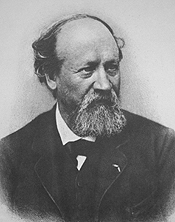
Boudin, c. 1890s
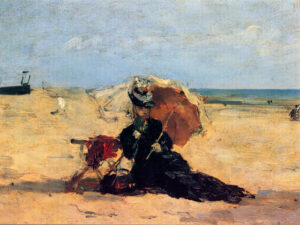
Honfleur, la plage



Today is the birthday of Max Jacob (Quimper, Finistère, Brittany 12 July 1876 – 5 March 1944 Drancy Deportation Camp); poet, painter, writer, and critic. Max Jacob is regarded as an important link between the symbolists and the surrealists, as can be seen in his prose poems Le cornet à dés (The Dice Box, 1917 – the 1948 Gallimard edition was illustrated by Jean Hugo) and in his paintings. His writings include the novel Saint Matorel (1911), the verses Le laboratoire central (1921), and Le défense de Tartuffe (1919), which expounds his philosophical and religious attitudes.
Having moved outside of Paris in May, 1936, to settle in Saint-Benoît-sur-Loire, Loiret, Max Jacob was arrested on 24 February 1944 by the Gestapo, and interned at Orléans prison. Jewish by birth, Jacob’s brother Gaston had been previously arrested in January, 1944, deported to Auschwitz concentration camp, and gassed upon arrival with his sister Myrthe-Lea. Following his incarceration at Orléans, Max was then transferred to Drancy internment camp from where he was to be transported in the next convoy to Auschwitz in Poland. However, said to be suffering from bronchial pneumonia, Max Jacob died in the infirmary. First interred in Ivry, after the war ended in 1949 his remains were transferred by his artist friends Jean Cassou and René Iché (who sculpted the tomb of the poet) to the cemetery at Saint-Benoît-sur-Loire in the Loiret department.
|
| Ballade de la visite nocturne, un des plus célèbres poèmes de Max Jacob. La « femme » en question est René Dulsou. |
|
| Mise au tombeau, hymne amoureux de Max Jacob au corps du Christ descendu de la croix. |
|
| Chansonnette galante de Max Jacob, vers 1908. |
|
| La Chanson de Marianne, mise en musique et chantée après guerre par Jacques Douai, est un des dix huit poèmes publiés en 1925 |
|
| « Pour les enfants et les raffinés », Œuvres Burlesques et Mystiques de Frère Matorel 1912 |
Gallery
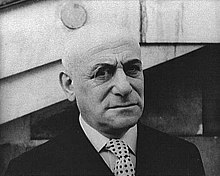
photographed by Carl van Vechten
-

“Le pardon de Sainte-Anne”.
-
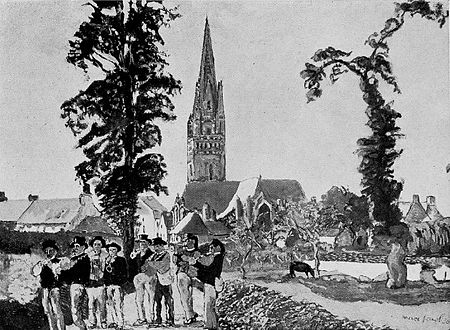
“Le clocher de Ploaré”.
-
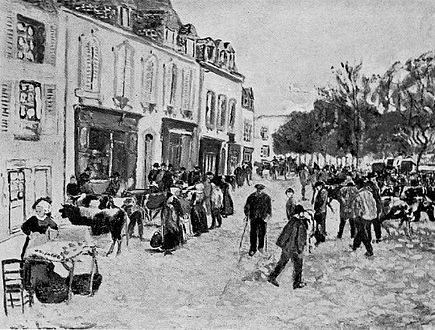
“Le marché à Pont-l’Abbé”.
-
“Le calvaire de Guengat”. Quimper’s Musée des beaux-arts.
He met the first serious love of his life, Russian poet Anna Akhmatova, in 1910, when he was 26. They had studios in the same building, and although 21-year-old Anna was recently married, they began an affair. Anna was tall (as Modigliani was only 5 foot 5 inches) with dark hair (like Modigliani’s), pale skin and grey-green eyes, she embodied Modigliani’s aesthetic ideal and the pair became engrossed in each other. After a year, however, Anna returned to her husband.
In the spring of 1917, the Russian sculptor Chana Orloff introduced him to a beautiful 19-year-old art student named Jeanne Hébuterne. From a conservative bourgeois background, Hébuterne was renounced by her devout Roman Catholic family for her liaison with Modigliani, whom they saw as little more than a debauched derelict. Despite her family’s objections, soon they were living together. Modigliani ended his relationship with the English poet and art critic Beatrice Hastings and a short time later Hebuterne and Modigliani moved together into a studio on the Rue de la Grande Chaumière. Jeanne began to pose for him and appears in several of his paintings. Hébuterne became a principal subject for Modigliani’s art. Towards the end of the First World War, early in 1918, Modigliani left Paris with Hébuterne to escape from the war and travelled to Nice and Cagnes-sur-Mer. They would spend a year in France. In May 1919 they returned to Paris with their infant daughter and moved into an apartment on the rue de la Grande Chaumière. After Hébuterne became pregnant again, Modigliani got engaged to her, but Jeanne’s parents were against the marriage, especially because of Modigliani’s reputation as an alcoholic and drug user. The wedding plans were shattered independently of Jeanne’s parents’ resistance when Modigliani discovered he had a severe form of tuberculosis.
After not hearing from him for several days, a neighbour checked on the family and found Modigliani in bed delirious and holding onto Hébuterne. A doctor was summoned, but little could be done because Modigliani was in the final stage of his disease. He died at the Hôpital de la Charité. There was an enormous funeral, attended by many from the artistic communities in Montmartre and Montparnasse. When Modigliani died, twenty-one-year-old Hébuterne was eight months pregnant with their second child. A day later, Hébuterne was taken to her parents’ home. There, inconsolable, she threw herself out of a fifth-floor window, a day after Modigliani’s death, killing herself and her unborn child. Modigliani was buried in Père Lachaise Cemetery. Hébuterne was buried at the Cimetière de Bagneux near Paris, and it was not until 1930 that her embittered family allowed her body to be moved to rest beside Modigliani. A single tombstone honors them both. His epitaph reads: “Struck down by Death at the moment of glory”. Hers reads: “Devoted companion to the extreme sacrifice”. Managing only one solo exhibition in his life and giving his work away in exchange for meals in restaurants, Modigliani died destitute.



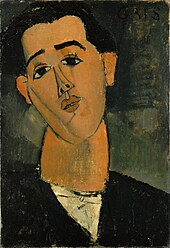

-
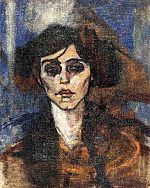
Portrait of Maude Abrantes, 1907
-

Paul Guillaume, Novo Pilota, 1915
-

Bride and Groom, 1915
-

Jacques and Berthe Lipchitz, 1916
-

Jean Cocteau, 1916, Henry and Rose Pearlman Collection, on long-term loan to the Princeton University Art Museum
-

Léon Indenbaum, 1916, Henry and Rose Pearlman Collection, on long-term loan to the Princeton University Art Museum
-

Portrait of Beatrice Hastings, 1916
-
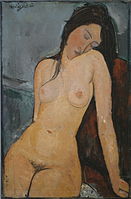
Female nude; Iris Tree, c. 1916
-

Portrait of Moise Kisling, 1915
-
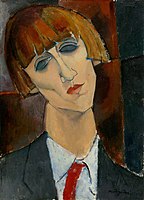
Madame Kisling, 1917
-

Nude Sitting on a Divan (“La Belle Romaine”), 1917
-
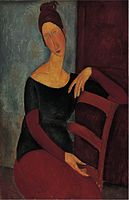
Jeanne Hébuterne, 1918
-

Dedie Hayden, 1918, Centre Georges Pompidou
-
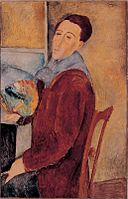
Self-portrait, 1919, oil on canvas, Museum of Contemporary Art, São Paulo, Brazil
-
Gypsy Woman with Baby, 1919, National Gallery of Art
-

The little peasant, 1918, Tate Liverpool
-
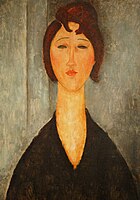
Portrait of a Young Woman, 1918, New Orleans Museum of Art
-

Buste de femme, unknown, before 1919, Museo Nacional de Bellas Artes (Buenos Aires)
-

Beatrice Hastings, 1916-1919, Solomon R. Guggenheim Museum
-

Woman with a Fan, 1919, stolen from Musée d’Art Moderne de la Ville de Paris
-
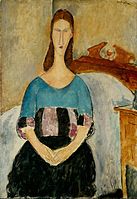
Portrait of Jeanne Hebuterne, Seated, 1918, Israel Museum, Jerusalem

- Nudes
-
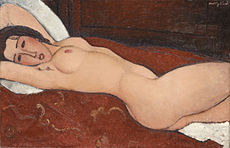
Reclining Nude, 1917, in The Metropolitan Museum of Art
-

Nu couché, 1917-18, sold for $170.4 million in 2015
-

Nude on a Blue Cushion, 1917



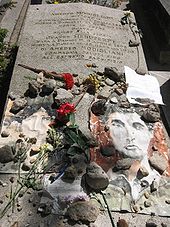

| Pablo Neruda | |
|---|---|

Pablo Neruda in 1963
|
|
|
|
Today is the birthday of Pablo Neruda (the pen name and, later, legal name of the Chilean poet-diplomat and politician Ricardo Eliécer Neftalí Reyes Basoalto (JParral, Maule Region; July 12, 1904 – September 23, 1973Santiago). He derived his pen name from the Czech poet Jan Neruda. Neruda won the Nobel Prize for Literature in 1971. He wrote in a variety of styles, including surrealist poems, historical epics, overtly political manifestos, a prose autobiography, and passionate love poems. He often wrote in green ink, which was his personal symbol for desire and hope. The Colombian novelist Gabriel García Márquez once called Neruda “the greatest poet of the 20th century in any language.” I highly recommend his erotically-charged love poems such as the ones in his 1924 collection Veinte poemas de amor y una canción desesperada (Twenty Love Poems and a Song of Despair).
- Debajo de tu piel vive la luna.
- The moon lives in the lining of your skin.
- Oda a la Bella Desnuda (Ode to a Beautiful Nude), from Nuevas Odas Elementales (1956), trans. Nathaniel Tarn in Selected Poems by Pablo Neruda [Houghton Mifflin, 1990, ISBN 0-395-54418-1] (p. 349).
- Mi amor se nutre de tu amor, amada
- My love feeds on your love, beloved
- From “Si Tu Me Olvidas” (If You Forget Me)
- My love feeds on your love, beloved
Es la hora, amor mío, de apartar esta rosa sombría,
cerrar las estrellas, enterrar la ceniza en la tierra:
y, en la insurrección de la luz, despertar con los que despertaron
o seguir en el sueño alcanzando la otra orilla del mar que no tiene otra orilla.
- It is time, love, to break off that sombre rose,
shut up the stars and bury the ash in the earth;
and, in the rising of the light, wake with those who awoke
or go on in the dream, reaching the other shore of the sea which has no other shore. - La Barcarola Termina (The Watersong Ends) (1967), trans. Anthony Kerrigan in Selected Poems by Pablo Neruda [Houghton Mifflin, 1990, ISBN 0-395-54418-1] (p. 500).
Veinte Poemas de Amor y una Canción Desesperada (Twenty Love Poems and a Song of Despair) (1924)
trans. William S. Merwin [Penguin Classics, 1993, ISBN 0-140-18648-4]
- ¿Quién escribe tu nombre con letras de humo entre las estrellas del sur?
Ah déjame recordarte cómo eras entonces, cuando aún no existías.- Who writes your name in letters of smoke among the stars of the south?
Oh let me remember you as you were before you existed. - “Every Day You Play” (Juegas Todos los Días), XIV, p. 35.
- Who writes your name in letters of smoke among the stars of the south?
- Quiero hacer contigo lo que la primavera hace con los cerezos.
- I want to do with you what spring does with cherry trees.
- “Every Day You Play” (Juegas Todos las Días), XIV, p. 35.
- Me gustas cuando callas porque estás como ausente,
y me oyes desde lejos, y mi voz no te toca.- I like for you to be still: it is as though you were absent,
and you hear me from far away and my voice does not touch you. - “I Like for You to be Still” (Me Gustas Cuando Callas), p. 37.
- I like for you to be still: it is as though you were absent,
- Puedo escribir los versos más tristes esta noche.
- Tonight I can write the saddest lines.
- “Tonight I Can Write” (Puedo Escribir), XX, p. 49.
- Es tan corto el amor y tan largo el olvido.
- Love is so short and forgetting is so long.
- “Tonight I Can Write” (Puedo Escribir), XX, p. 51.
Mac Tag
The song of the day goes out to The Rolling Stones who played their first gig on this day in 1962: “Angie” http://www.youtube.com/watch?v=rXRExocnpUw
Weary with toil, I haste me to my bed, The dear repose for limbs with travel tired; But then begins a journey in my head. – Shakespeare
Having inherited a vigorous mind / From my old fathers, I must nourish dreams / And leave a woman and a man behind / As vigorous of mind… – W.B. Yeats
I am learning how to compromise the wild dream ideals and the necessary realities without such screaming pain. – Sylvia Plath
I was just interested, endlessly interested, foolishly, unadulteratedly, with unparalleled vigor. – Gay Talese
Tonight I can write the saddest lines… – Pablo Neruda
I thought the most beautiful thing in the world must be shadow, the million moving shapes and cul-de-sacs of shadow. – Sylvia Plath



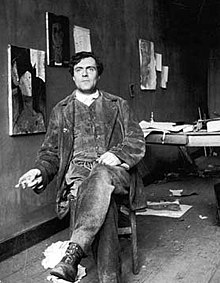

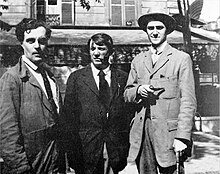
No Comments on "The Lovers’ Chronicle 12 July – full woman – art by Eugène Boudin, Max Jacob & Modigliani – verse by Jacob & Pablo Neruda"